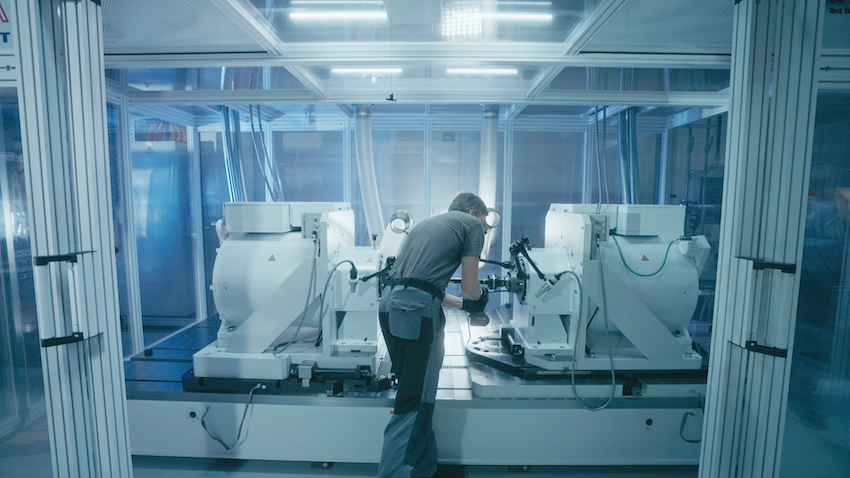GKN Automotive develops ‘real-time’ test rig for electric vehicles
GKN Automotive has created a ‘real-time’ test rig for EV driveline components, capable of handling the requirements of electric vehicles.
The rig, installed at GKN Automotive’s Offenbach facility, can handle the extreme dynamics and higher torque of electrified powertrains, which make conventional load test rigs unsuitable for driveline parts of the latest generation, such as side shafts.
GKN’s ‘real-time capable’ unit can test specific load data provided by customers, from small electric city cars to the most powerful SUVs and is able to dynamically control speed and torque to replicate wheelspin and other complex driving conditions. This sets new industry standards for precision and quality control in the testing of electric vehicle components and enables engineers to deliver the lightest, most efficient solutions with no compromise on capability.
The cutting-edge test rig is complemented by GKN Automotive’s high level of engineering expertise, which is crucial to correctly setting up and executing tests on the new rig. Data must be selected and validated by the team to establish parameters for the test, and the system must be carefully calibrated during set up to accurately replicate precise load dynamics.
By allowing its team to meet the most exact standards while minimising the weight of components and the amount of material used in their manufacture, GKN’s test rig delivers significant sustainability improvements to our products and, in turn, its customers’ vehicles. This results in enhanced EV efficiency and performance.
GKN Automotive is already providing eDrive systems to more than two million electrified vehicles across the globe, with core driveline components selected for use in powertrain systems by a number of the world’s leading electric vehicle manufacturers.
Mario Syhre, Director Product Technology at GKN Automotive, said: “Electric vehicles place different load dynamics on our driveline components and this new rig allows us to accurately reproduce those to achieve an unprecedented level of testing. Components need to be much stronger to cope with the higher torque and the extra weight of EVs, without increasing significantly in size or weight, and remain as cost-effective as possible. The new rig allows us to accurately replicate the loads on our components, from small electric city cars to the most powerful SUVs, and deliver the lightest, most efficient solution.”
